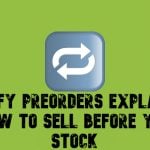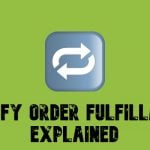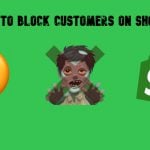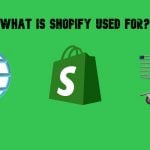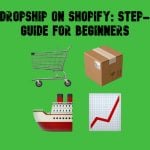E-Commerce Impulse Buys Guide: Boost Your Sales with Effective Strategies and Smart Tools
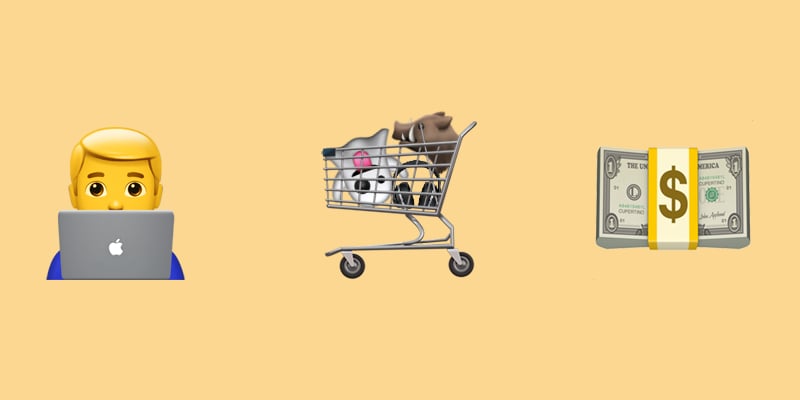
This guide explores the world of impulse buys, breaking down what they are, why they work, and how to leverage them on major platforms like Magento, Shopify, Shopware, and BigCommerce. By understanding the psychology behind impulse buying — from the thrill of limited-time offers to the comfort of customer reviews — you can build an experience that feels both spontaneous and satisfying for your customers.
Below, we dive into core motivators like scarcity, convenience, and emotional appeal and examine how to tailor these tactics on your platform. You’ll find actionable tips on using cross-sell tools, setting up dynamic pricing strategies, and integrating social proof to drive impulse buys strategically.
Finally, we explore which product categories perform best for impulse purchases, making it easier to target your offerings and drive higher average order values (AOV). Whether you’re a seasoned Magento user or just getting started on Shopify, this guide provides the insights to transform impulse buys from a happy accident into a strategic asset.

Table of contents
What Are Impulse Buys: Understanding What Drives Spontaneous Purchases
Impulse buys are the secret sauce of e-commerce, the unexpected items that end up in your cart when you are only meant to buy a new phone charger. But what exactly are impulse buys, and why are they such a powerful force in online shopping?
In simple terms, impulse buys are unplanned purchases — driven by sudden urges rather than careful consideration. They’re not just the result of clever marketing but tap directly into the consumer’s psychology. When browsing an e-commerce store, customers might not intend to pick up that cute pair of socks or the sleek phone case, but something about the way those products are presented nudges them to do so. It’s a split-second decision, often fueled by emotions like excitement, fear of missing out (FOMO), or the allure of a good deal. You can find other useful definitions in our e-commerce glossary.
So, why do impulse buys matter for online stores? For starters, they can significantly boost the average order value, turning a simple purchase into a bigger one without the customer even realizing it. It’s like finding that extra snack in your bag when you’re already on your way out — it feels like a win. For store owners, understanding and strategically leveraging these behaviors can mean the difference between a missed opportunity and a sale.
At the heart of it, impulse buying is about tapping into psychological triggers. It’s the dopamine rush from seeing a “limited-time offer” or the comfort of clicking “add to cart” on a recommended product that feels tailor-made just for you. Whether it’s the last-minute pop-up suggesting a complementary item or a flash sale banner that promises 20% off for the next 10 minutes, e-commerce platforms like Magento or Shopify have mastered the art of engineering these little nudges.
Big marketplaces a not an exception, too. Consider Amazon’s “Frequently Bought Together” section or the “Customers Also Bought” recommendations on checkout pages — these features are specifically designed to trigger impulse buys. The result? An upsell that feels natural, almost like a friendly suggestion rather than a hard sell.
In a digital world overflowing with choices, creating opportunities for impulse buys can be the key to standing out. It’s not about manipulating customers but offering them a satisfying, convenient experience — one where they discover things they didn’t even know they wanted. So next time you’re optimizing your store, think about those small, seemingly inconsequential products. They might just be the spontaneous purchase that makes a big impact on your bottom line.
Key Drivers Behind Successful Impulse Buys & Their Implementation on Major E-commerce Platforms
What makes a customer toss that extra item into the cart right before checkout? It’s not a coincidence — it’s a carefully orchestrated strategy aimed at tapping into core motivators behind impulse buys. Whether you’re selling on a huge Magento website or a tiny Shopify storefront, the psychology driving impulse purchases is universal and incredibly potent. Here’s what you need to know.
1. Scarcity & Urgency: FOMO in Full Swing
Imagine this: you’re eyeing a limited-edition smartwatch. It’s sleek, shiny, and — uh-oh — there’s only “2 left in stock.” That little jolt of panic you feel? That’s scarcity doing its job. When customers see phrases like “low stock” or “limited time offer,” they experience the fear of missing out (FOMO), which often triggers an impulse buy.
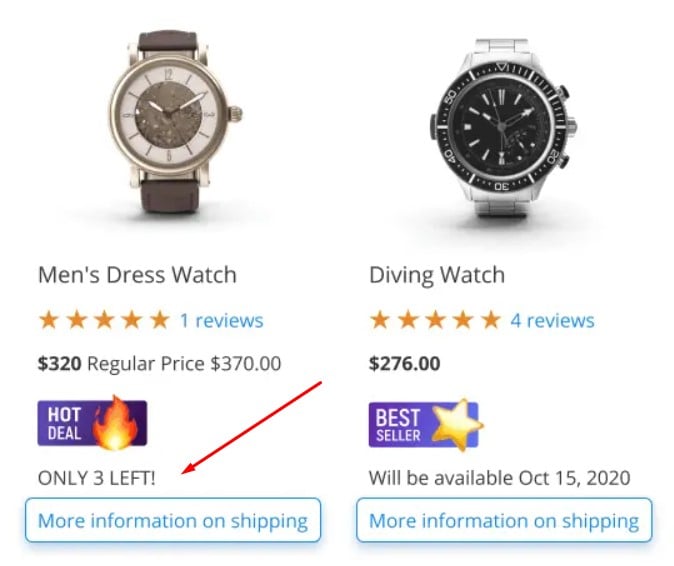
A custom stock status like “Only 3 Left!” taps into scarcity, nudging customers toward impulse purchases
Tools like countdown timers or stock indicators can work wonders. A simple “Hurry, sale ends in 30 minutes!” notification might be all it takes to tip a hesitant buyer over the edge. It’s not manipulation — it’s urgency meeting opportunity. Customers want to believe they’re snagging something special, something rare. And when it’s framed as a fleeting chance, they’re more likely to make that spontaneous purchase.
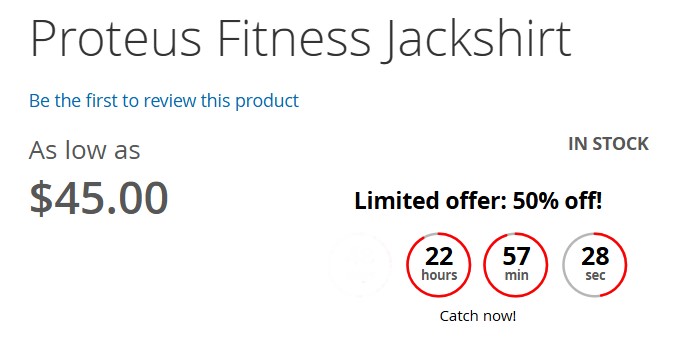
A countdown timer creates urgency, encouraging customers to make impulse buys before the deal expires
You can easily get the corresponding functionality on major e-commerce platforms with the help of these tools:
2. Convenience: Removing Friction, Increasing Impulse
Impulse buys thrive when the path to purchase is smooth and seamless. Think about the one-click purchase feature on Amazon. There’s no room for second-guessing because the action is as effortless as swiping right on a dating app.
For merchants, simplifying the buying process is key. Major e-commerce platforms introduce a quick add-to-cart process that allows shoppers to add items without leaving their current page. So, consider suggesting small, complementary products right before checkout — like a screen protector for the phone they’re buying. The easier it is for a customer to say “yes,” the more likely they are to act on impulse.
Think of your “Frequently Bought Together” section as a well-tuned tool designed to meet your customers’ needs, not just a random assortment of products. This way, you help shoppers quickly find complementary items for their main purchase, saving them from endless browsing.

A “Frequently Bought Together” feature displaying related products, making it easy for customers to add complementary items to their cart
Therefore, you need to display highly targeted related products. Magento’s built-in Product Recommendations feature is enough for that. It lets you set up related products, upsell, or cross-sell options right from the admin panel. If you want a more robust solution, pay attention to this module:
Shopify’s Product Recommendations feature is also built into the platform. Want more flexibility? Try third-party apps like or .
Shopware, in turn, offers built-in options for cross-selling, but for more advanced functionality, try or other similar third-party apps.
BigCommerce is not an exception. The platform offers a reliable mechanism to display related products. At the same time, you can rely on some top-notch AI e-commerce tools like .
3. Emotional Appeal: Speaking to the Heart (and Wallet)
Impulse buys aren’t logical decisions — they’re emotional ones. The product that sells isn’t necessarily the one that’s most needed, but the one that feels right. Maybe it’s a cozy blanket that reminds you of childhood or a sleek gadget that makes you feel a bit more futuristic. This is where emotional appeal comes into play — it’s about creating a momentary connection between the product and the buyer’s emotions.
While this connection can be based only on specific products, let’s add another powerful driving factor into the mix: the allure of a great deal. Sales and discounts amplify the emotional appeal, turning a simple desire into an urgent need. When customers see a lower price, the rational side of their brain takes a backseat, and the emotional side revs into overdrive. It’s not just about wanting the product — it’s about not wanting to miss out on the perceived savings.
Consider this scenario: you’re browsing a Magento store and stumble upon a pair of headphones listed at 40% off. You didn’t plan on buying headphones today, but the thought of snagging them at a lower price feels like a victory. That little endorphin rush you get from a good bargain is what drives the impulse buy. The item becomes less about its utility and more about the thrill of getting a deal.
Store owners can tap into this psychology by incorporating dynamic pricing strategies, limited-time offers, or exclusive discounts for new customers. Flash sales, “Deal of the Day,” or personalized discount pop-ups that appear when a customer is hesitating on a product page can provide that final nudge. By highlighting the savings and making the offer feel unique or time-sensitive, you’re enhancing the emotional appeal and heating up the desire to purchase.
Magento 2 offers robust tools to manage catalog and cart price rules, allowing you to create complex discount scenarios tailored to impulse purchases. With options for percentage discounts, fixed prices, and buy-one-get-one deals, Magento 2 gives you the flexibility to experiment with different offers.
Navigate to Marketing > Promotions > Catalog Price Rules or Cart Price Rules in the Magento Admin Panel. Here, you can set conditions based on product attributes, categories, or customer groups to trigger discounts automatically.

Magento’s catalog price rule setup allows store owners to create discounts that increase the likelihood of impulse buys
Shopify makes it easy to set up automated discounts and flash sales, perfect for encouraging impulse buys. Whether it’s a simple percentage off, free shipping, or a limited-time sale, Shopify’s discount features can be configured in just a few clicks.
Go to Discounts in the Shopify Admin Panel. Choose Automatic Discounts for catalog-wide sales or Create Discount Code for targeted promotions. You can also utilize Shopify’s “Sale” badges to highlight discounted items and increase visibility.

Shopify’s discount panel showcases various promotions like buy-one-get-one-free and limited-time sales, designed to encourage impulse purchases
Shopware 6 provides a comprehensive system for managing promotions and discounts, offering flexibility through its dynamic rules engine. You can create tailored discounts based on customer behavior, product attributes, or cart content, making it ideal for targeting impulse buyers.
Access the Marketing > Promotions and Discounts section in the Shopware 6 Admin Panel. Here, you can configure rules using the Rule Builder, allowing for precise control over when and where discounts are applied.
BigCommerce also features built-in discount tools, including automatic discounts and coupon codes, designed to help boost impulse purchases. The platform supports various discount types like percentage, fixed amount, and free shipping offers, along with time-based promotions for added urgency.
Head to Marketing > Discounts & Coupons in the BigCommerce Admin Panel. Set up Automatic Promotions to apply discounts without the need for customer input or create Coupon Codes for specific deals.
Social Proof: The Power of Herd Mentality
Have you ever bought something just because it had hundreds of positive reviews? That’s social proof at work. Customers often look to others when making a purchase decision, especially when it comes to impulse buys. If everyone else loves it, it must be good, right?
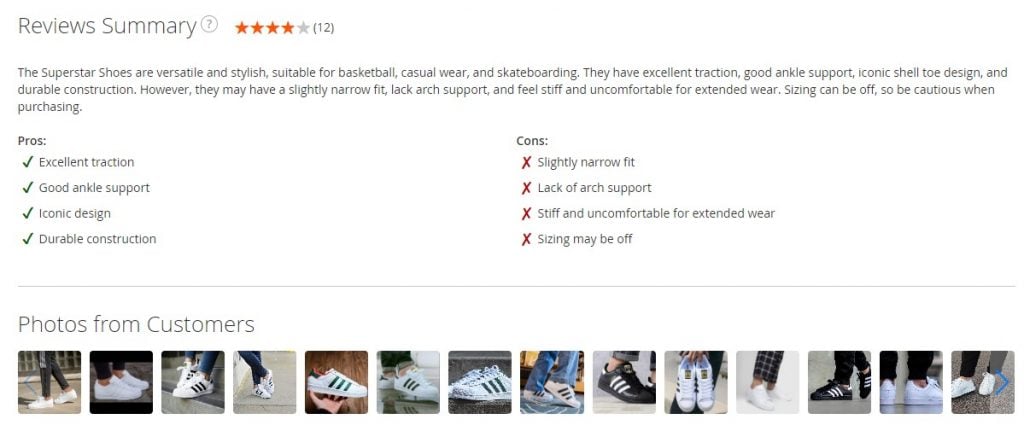
A product review section utilizing AI-generated summaries helps customers make quicker decisions, increasing the chance of spontaneous purchases
Leveraging social proof on Magento is straightforward — integrate product reviews, showcase best-sellers, or highlight what’s trending. When customers see a product that’s flying off the shelves or one that’s “Frequently Bought Together,” they’re more inclined to add it to their cart without a second thought. It’s the online equivalent of joining a line just because everyone else is in it.
- Magento 2: Try using extensions like Mirasvit’s Magento 2 Product Reviews extension. It not only displays rich product reviews with ratings and images but also uses AI to generate a concise summary for each product based on customer feedback. For best-seller and trending product highlights, consider Aheadworks Automatic Related Products, which dynamically showcases popular items based on user behavior.
- Shopify: Shopify users can leverage or to display customer photo reviews, adding an extra layer of authenticity. For social proof and urgency, can show pop-ups like “X people recently bought this,” making trending items more appealing.
- Shopware 6: Use plugins like to offer customizable review displays and aggregate ratings. To showcase trending or popular products, the Shopware Cross-Selling feature can be configured to display items frequently bought together or currently trending.
- BigCommerce: For BigCommerce stores, is a popular choice, enabling product reviews, star ratings, and photo feedback. To highlight best-sellers and boost impulse buys, the app can recommend complementary products directly on the product page.
Successful impulse purchases are about creating a sense of urgency, eliminating friction, appealing to emotions, and harnessing the power of social proof. It’s not about tricking customers into buying what they don’t want — it’s about giving them a nudge in the right direction when they’re already in the buying mood. So, next time you’re configuring your Magento store, think about these motivators. With the right tools and strategies, you’re not just making sales — you’re creating moments of spontaneous delight.
Top Impulse Buy Categories in E-commerce
Not all impulse buys are created equal. Some items practically sell themselves, while others need a little more nudge. If you know which categories tend to attract impulse purchases, you can dramatically enhance the effect of the tools mentioned in the previous chapter. Think small accessories, handy add-ons, limited-edition items, and trending products that tap into the “buy now or regret it” mentality. Let’s dive into some of the most common impulse buys and why they work so well.
1. Small Accessories: Low-Cost, High-Impact
Small accessories are the bread and butter of impulse purchases. Think about it — how often have you added a phone case, keychain, or pair of earrings to your cart without a second thought?
These items are usually low-cost and low-risk, making them easy to justify. They’re the ultimate “treat yourself” items that slip into the cart with hardly a pause. Popular sites like AliExpres are masters of this, with well-placed recommendations for small, fun accessories that complete the look or enhance a primary purchase.
When searching for an automated cat feeder, the website offers a wide range of related products, using a mix of strategies. Alongside budget-friendly feeders, you’ll also see suggestions like a cat litter scoop (because once your cat is fed, cleanup comes next) and even a nail clipper. It’s a smart way to cater to the customer’s needs, promoting complementary items that naturally fit into the buying journey.
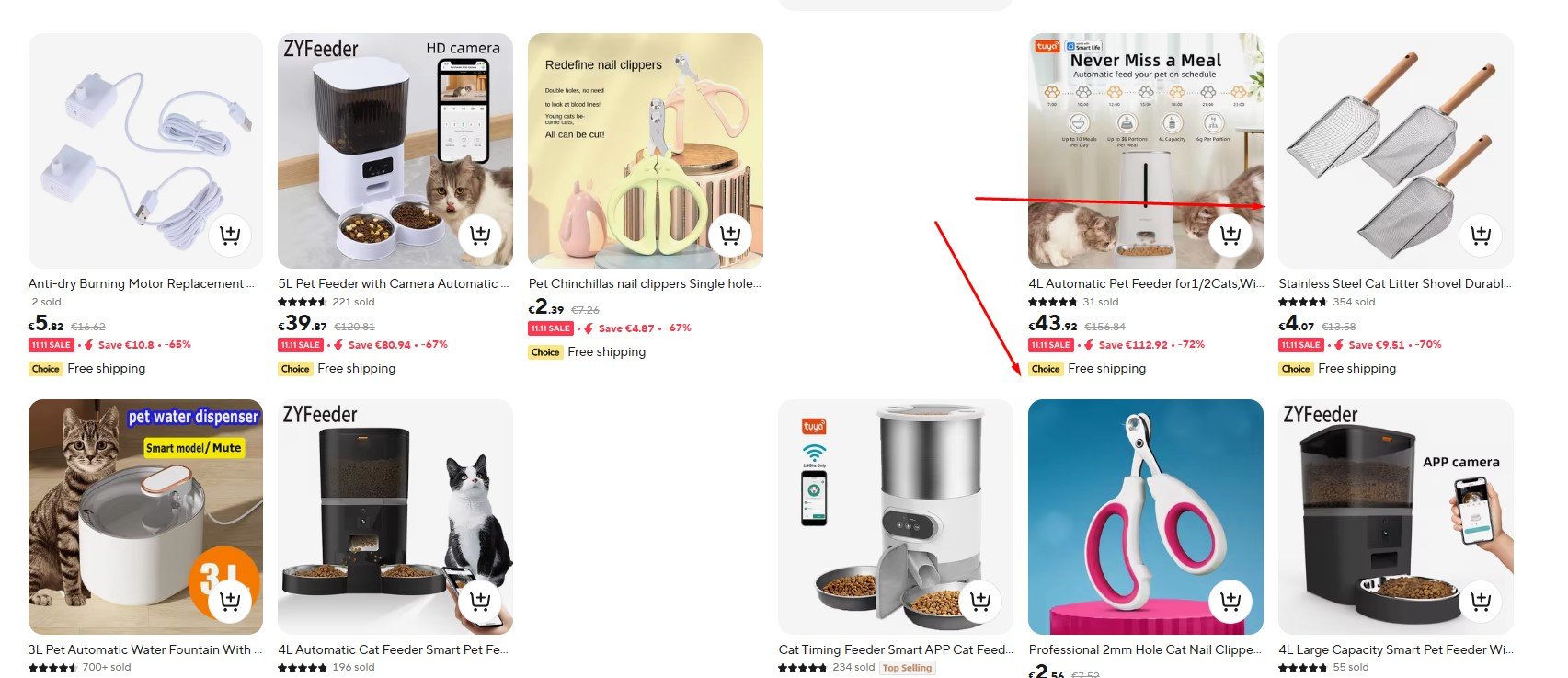
A product page for an automated cat feeder suggests complementary items like a litter scoop and nail clippers
2. Confidence: Who Doesn’t Want It?
ASOS knows the power of a confident look. When browsing for a single item, let’s suppose, a new t-shirt, the shopper is shown the entire outfit modeled with style. It’s not just about the shirt anymore — it’s about the full vibe. The cool, put-together appearance of the model creates a sense of confidence and aspiration; the shopper wants to look just as good.
ASOS capitalizes on this by offering a “Buy the Look” feature, allowing customers to purchase the entire outfit in one click. It’s a seamless way to turn a single planned purchase into a complete, spontaneous buy.
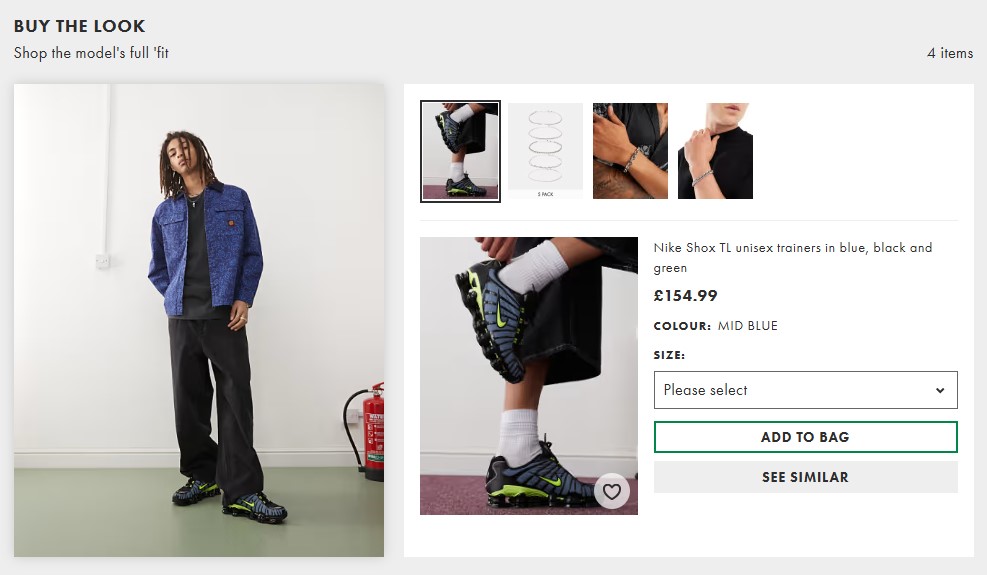
ASOS uses the ‘Buy the Look’ feature, allowing customers to purchase the entire outfit worn by the model
3. Limited-Edition & Seasonal Items: FOMO in Full Effect
There’s a reason why people flock to pumpkin spice everything every autumn — it’s limited, and it won’t be around forever. Limited-edition and seasonal products tap into the fear of missing out, making them some of the best impulse buys. Customers see these items as rare opportunities, and the time-bound nature creates a sense of urgency that encourages them to buy on impulse.
Major retailers like Starbucks and Sephora use this to great effect with seasonal drinks, limited-release beauty products, and holiday exclusives. So, consider adding a seasonal section to your store or highlighting limited-edition items with countdown timers or “only a few left” badges. It’s about creating a sense of now or never.
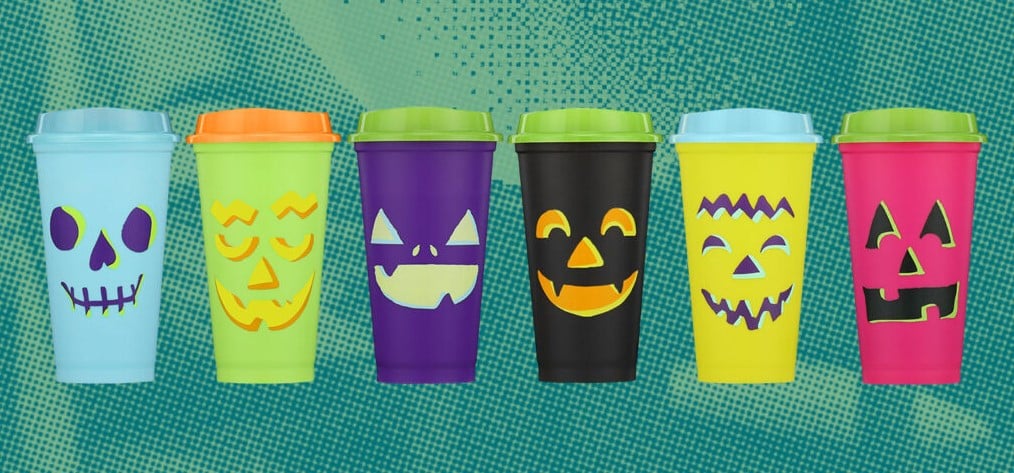
Starbucks showcases its limited-edition Halloween merchandise, tapping into seasonal hype and driving spontaneous buys
4. Trending Products: Riding the Hype Wave
Social media has a powerful influence on what we buy, and trending products are proof of this. Whether it’s the latest gadget, viral fashion item, or must-have kitchen item, trending products have the power to create instant desire. Customers want to be part of the moment, to own what everyone else is talking about.
Brands like Urban Outfitters and Best Buy excel at showcasing trending products prominently on their websites, tapping into the hype and driving impulse buys.
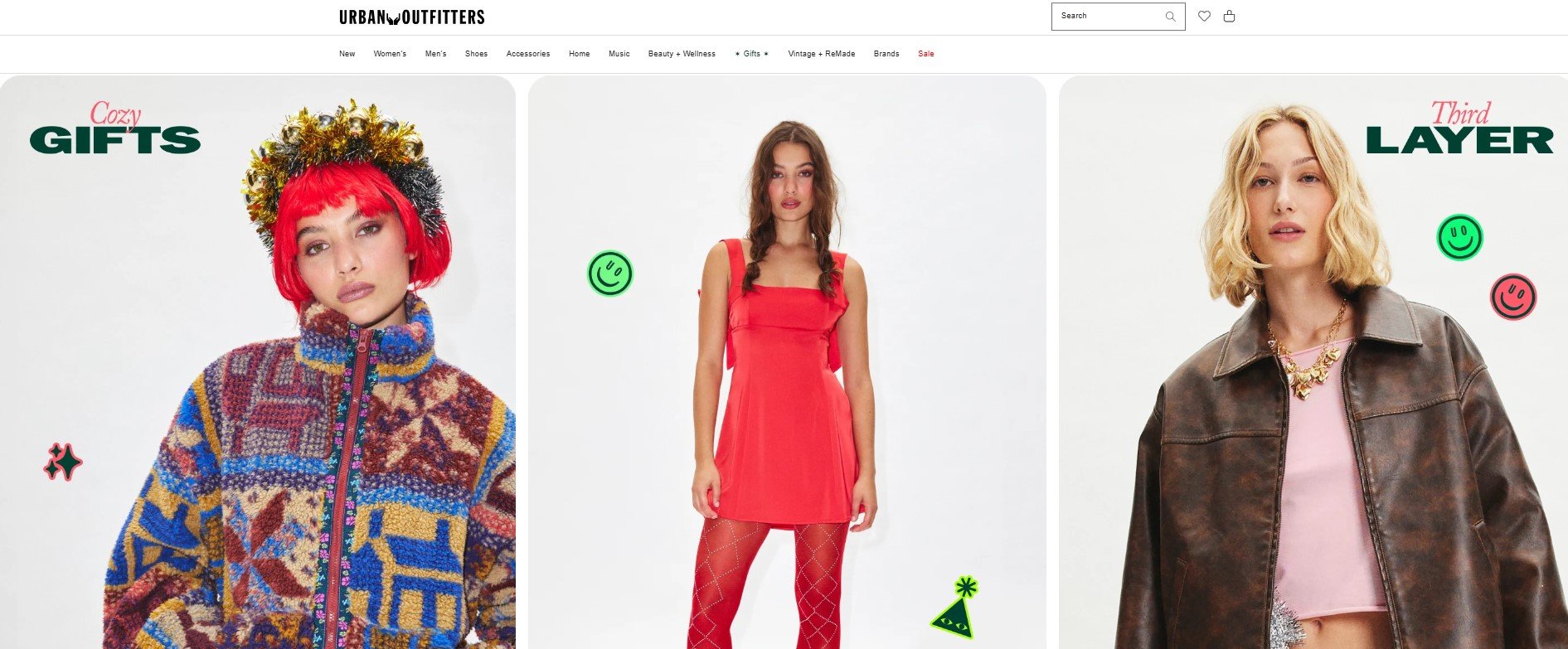
Urban Outfitters highlights trending styles, encouraging impulse buys by creating a sense of what’s currently in vogue
For your e-commerce store, create a “What’s Trending” section or use dynamic banners that update with popular products. When customers see what’s hot, they’re more likely to want a piece of it. And don’t forget about the social proof tools!
Conclusion: Making Impulse Purchases a Strategic Asset
Impulse buys are more than just the spur-of-the-moment treats that find their way into customers’ carts. They’re a powerful strategy for boosting AOV and enriching the customer experience. When done right, they make shoppers feel like they’ve scored something extra — whether it’s an unexpected deal, a trendy add-on, or a limited-edition gem.
The benefits of well-placed impulse purchases go beyond profit. They add excitement to the shopping journey, increase customer satisfaction, and build a sense of value and personalization. When customers stumble upon that perfect accessory or last-minute deal, it’s not just a sale — it’s an experience that connects them to your brand.
But here’s the real trick: impulse buys work best when they’re tailored to the audience and reflect the brand’s personality. Testing different strategies, from seasonal promotions to trending products, can help you find what resonates most. Use data to refine your approach, watching which tactics drive the highest engagement and conversion. Maybe it’s the countdown timer that creates urgency, or maybe it’s a “frequently bought together” section that does the trick. Each store has a unique pulse, and experimenting with different tools can help you find the sweet spot.



